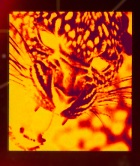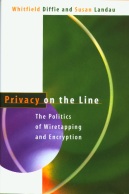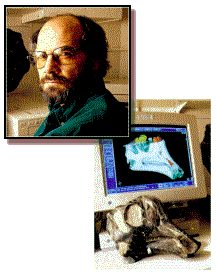

These are the reviews from January through March of 1998. For newer reviews, go back to the main book page.
This book is quite large, over 500 pages, but is divided into six fairly cohesive sections. The first section begins with a small but useful example program, and then carefully leads the reader through Tcl basics: data handling, control structures, and I/O. The other sections cover advanced features of Tcl, the basics and facilities of Tcl's graphical user interface toolkit Tk, and the mechanisms for embedding and extending Tcl. The newest version of Tcl, Version 8, runs well on all three major computing platforms: Unix, Windows, and Macintosh, and Dr. Welch carefully points our platform conflicts where they still exist. Copious code examples, large and small, illustrate all the technical points of Tcl and Tk. Some of the code examples are rather complex, sometimes unnecessarily so, but they are all well written and clear.
No previous experience with Tcl is needed to understand and use this book, but some prior programming knowledge will be helpful. Also, it may be helpful to have Tcl/Tk installed to be able to try out the examples and write small programs to test ideas. A CD-ROM is distributed with the book, and it includes a fairly recent version of Tcl/Tk as well as collected code examples and tools.
Conclusion: Recommended
 The book is set in the fairly near future; perhaps 30-40 years into
the new millennium.
The most incorrigible criminals are treated on orbital planetoids
by Teaching them to face their fears. The main character is
one of the Teachers, Dr. Jaguar Addams.
Without giving away too much of the plot,
the book follows Dr. Addams from assignment onto two cases to
their conclusions.
The book is set in the fairly near future; perhaps 30-40 years into
the new millennium.
The most incorrigible criminals are treated on orbital planetoids
by Teaching them to face their fears. The main character is
one of the Teachers, Dr. Jaguar Addams.
Without giving away too much of the plot,
the book follows Dr. Addams from assignment onto two cases to
their conclusions.
Fear is a central theme of the story: fear to be exposed in the inmate/patients, fear to be overcome by Jaguar. The backgrounds for these fears is revealed gradually, in flashbacks and conversations. The pacing is quite good, and the author strikes fair balance between graphic description and personal introspection.
Another thread running through the book is a psychic ability for direct empathy (almost telepathy). It can help a Teacher find a patient's innermost fear, but it can also be dangerous. The role of empathy in the story, and the style in which it is described, is comparable to early work by Joan D. Vinge.
All of the characters in the book, we discover, are shaped partly by their backgrounds. That background, for most of them, includes a time of horrific urban violence and slaughter called 'The Serials'. This facet of the book gives it a 'cautionary tale' sub-theme, one that could perhaps have been explored in more depth. The flashbacks and discussions of The Serials, while important to the story, may be a little graphic or disturbing for some readers.
Overall, this was a good first novel, and would certainly incline a science fiction fan to check out future work by this promising author.
Conclusion: Recommended
 Dr. Benford is a fascinating novelty in the science fiction community, a
working scientist who also writes excellent fiction. This new book has
been under development by the author since the late 1980s, and it clearly
shows the long and careful thought put into its scientific ideas.
Currently in hardback, it should be available in paperback this spring.
Dr. Benford is a fascinating novelty in the science fiction community, a
working scientist who also writes excellent fiction. This new book has
been under development by the author since the late 1980s, and it clearly
shows the long and careful thought put into its scientific ideas.
Currently in hardback, it should be available in paperback this spring.
The basic plot concerns one Dr. Alicia Butterworth, a particle physicist engaged in a popular pastime in her line of work: smashing tiny things together at extremely high speeds. Her particular experiment creates an anomalous sphere, coincidentally wrecking her most vital instruments. Discouraged by conditions of the setback and her treatment by the administration of the facility, she retreats to her university laboratory taking the anomaly with her. Once there, the reader is taken along a fascinating path to discovery and understanding as Alicia and her graduate students and a colleague study the strange sphere.
The character of Dr. Butterworth is important to the story. She embodies some fairly sensitive stereotypes, but the author has also given her some unique and interesting quirks that help drive the plot along. All of the other characters like post-doc Zak and Professor Max Jablon, while interesting, are subsidiary to Alicia. The story is set in the very near future, 2005, and in familiar locations: Brookhaven National Labs on Long Island, and the University of California at Irvine (where Dr. Benford holds a chair in physics). After the real importance of the sphere becomes clear, Dr. Butterworth is buffeted by legal and political storms as she struggles to compress her study of the sphere and avoid a variety of scientific and human dangers.
The settings and characters in the story are fine, but the real strength of this novel is its brilliant integration of solid science with an exciting story. Any reader who remembers their freshman physics and has read books by Kip Thorne or Stephen Hawking will be able to feel the excitement and wonder as Alicia and Max close in on the mystery, and then explore it. One caution - DO NOT read the liner notes on the book cover before reading the book! In fact, close your eyes, take the dust jacket off, and hide it; otherwise you ruin some of the mystery.
Many other science fiction authors attempt to mix hard science into their work. COSM stands with the best works in this area; the science is completely modern and logical, well explained, and totally plausible. Even the central premise is reasonably consonant with current scientific beliefs, based on ideas developed from Alan Guth's inflationary universe. Dr. Benford takes these ideas and runs with them, moving from the mundane confines of Dr. Butterworth's lab to the most profound questions of cosmic meaning.
In short, this book is an excellent choice for any reader who likes real science in their science fiction.
Conclusion: Recommended (highly so for fans of "hard" SF)
Dr. Krauss introduces each topic by tying it to a specific film or TV episode. For example, the invading spacecraft in Independence Day present some problems in mechanics, Dr. Krauss shows that the laws of physics reveal some logical gaps in that blockbuster movie. Some of the other topics in the book are:
Fans of science fiction movies and TV will certainly find the links to their favorite shows intriguing, but some may be disappointed at just how far-fetched some of the Hollywood scenarios really are. The ultimate message of this book is that real science can be just as entertaining and exciting as science fiction.
Conclusion: Recommended
 In some parts of the book, the conflict between
individual and social interests is made very plain,
and elements of the US government are portrayed as
having been chipping away at the privacy of citizens and businesses
over the years since telephones were invented. The bulk of
the blame for this trend is laid at the feet of law enforcement
authorities, especially the FBI. Encryption policy, a closely
related but distinct topic, has a shorter but even more contentious
history, and the authors point the finger of blame for past abuses and current
trends primarily at both the FBI and the NSA.
Subtitled The Politics of Wiretapping and Encryption, this
book does concentrate on the political history and government
participants. Both authors are computer scientists, though, and
they also provide technical background and analysis that does not
appear in newspapers or magazines.
In some parts of the book, the conflict between
individual and social interests is made very plain,
and elements of the US government are portrayed as
having been chipping away at the privacy of citizens and businesses
over the years since telephones were invented. The bulk of
the blame for this trend is laid at the feet of law enforcement
authorities, especially the FBI. Encryption policy, a closely
related but distinct topic, has a shorter but even more contentious
history, and the authors point the finger of blame for past abuses and current
trends primarily at both the FBI and the NSA.
Subtitled The Politics of Wiretapping and Encryption, this
book does concentrate on the political history and government
participants. Both authors are computer scientists, though, and
they also provide technical background and analysis that does not
appear in newspapers or magazines.
The style that Drs. Diffie and Landau adopt for this book is a little less colorful and a little more thoughtful than the tone they use for speeches. Primary source material and statistic are used generously throughout the book to support the authors' points, usually but not always accompanied by an analysis of the context in which the facts were originally published. The authors are refreshingly non-partisan, criticizing government figures of every stripe on the basis of their words and actions. For example, the book presents in detail the FBI's reasons for demanding broader wire-tapping authority for federal agents, then refutes those arguments using statistics published by the FBI.
In general, I found the arguments and analyses in the book to be fair and reasonably objective. Certainly, any book about a subject this complex and technical will commit over-simplifications and will omit details; Privacy on the Line does both. However, the authors have done an excellent job collecting references to guide the reader to additional information. A bigger question to ask of a book like this is how well it avoids bias and pre-judgement in presenting the facts. Despite the admitted pro-privacy position of the authors, I think the book manages to be pretty even-handed, except in its treatment of unsavory figures already judged by history (e.g. J. Edgar Hoover).
This book will serve as a helpful survey for readers already involved in privacy policy, and as a comprehensive introduction for those just beginning to take an interest.
Conclusion: Highly recommended
 Jack Horner is curator of paleontology at the
Museum of the Rockies in Bozeman,
Montana. Much of Dinosaur Lives describes discoveries and fieldwork
in Montana's badlands, an inhospitable landscape that
holds a treasure in fossil data. The stories of problems, labor, and
lucky breaks are fascinating, and really humanize a science that so
many of us know only through assembled skeletons seen in museum exhibits.
Mixed in with the descriptions of the fieldwork are detailed insights
into how a top scientist goes about selecting a dig site, and how their
expectations influence what they find.
Jack Horner is curator of paleontology at the
Museum of the Rockies in Bozeman,
Montana. Much of Dinosaur Lives describes discoveries and fieldwork
in Montana's badlands, an inhospitable landscape that
holds a treasure in fossil data. The stories of problems, labor, and
lucky breaks are fascinating, and really humanize a science that so
many of us know only through assembled skeletons seen in museum exhibits.
Mixed in with the descriptions of the fieldwork are detailed insights
into how a top scientist goes about selecting a dig site, and how their
expectations influence what they find.
Much of the second half of the book deals with interpretation of paleontological data. Jack Horner is well known for his fossil discoveries, and also for the conclusions he draws from them. In the mid-1980s, his goal was to find more dinosaur eggs and babies. Through the late 1980s and early 1990s, his goals changed and expanded into using the fossil record to study dinosaur social life and evolution. To me, this is one of the book's best features: it brings dinosaurs alive through real science rather than fanciful fiction. One point that it conveys effectively is that a fossil by itself is worth much less than a fossil in context; baby hadrosaurus bones tell a story about social behavior of the species, but only by their proximity to adults' bones. By studying the fossil sites and distributions, reconciling the data with geological records, and clever use of computer analysis and modeling, Jack Horner has reached some deep conclusions about dinosaurs' lives. Rather than announce these conclusions at the beginning, as he might in an academic journal, he takes the reader along some of the same ground he covered to reach them. In fact, the book is subtitled "Unearthing an Evolutionary Saga," and it carefully lays out all the arguments and steps in deducing how some dinosaurs evolved along the coast of the western seaway more than 70 million years ago. Despite his occasionally unwarrented criticism of modern ideas in evolutionary biology, John Horner makes a very strong case for his views on how certain dinosaur communities evolved.
There's a lot more to Dinosaur Lives than I can cover in this review, the author packs quite a bit into less than 250 pages. If you like dinosaurs and paleontology, or if you just like seeing how a top researcher thinks, you'll like this book.
Conclusion: Recommended, highly so for dinosaur fans
All reviews (c) 1998, Neal Ziring. Reviews may be reproduced in whole or
in part as long as authorship credit is preserved.
[Ziring
MicroWeb Home] [Neal
Ziring] [Julie
Ziring]
[Ziring Guestbook]
This page written by Neal Ziring, last modified 4/17/98.